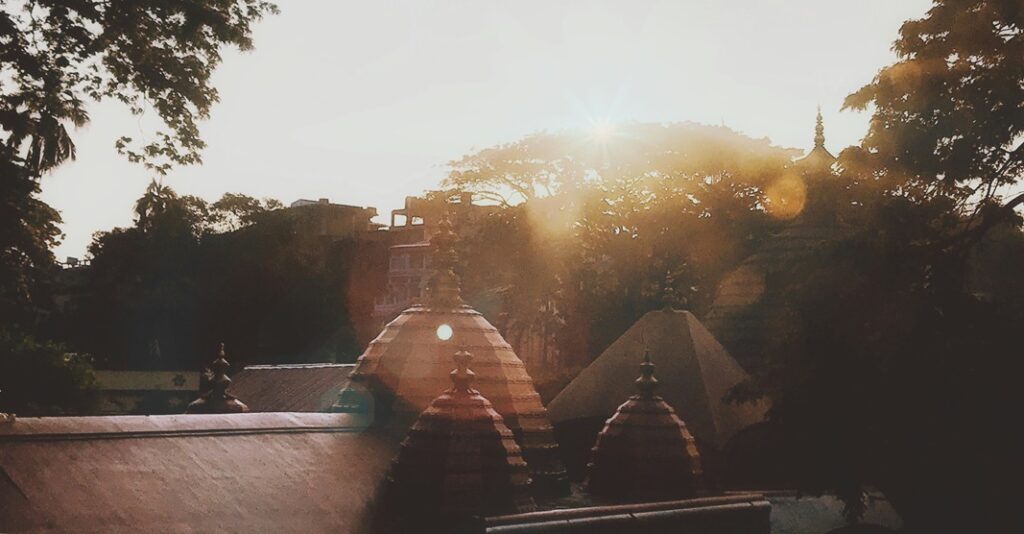
10 Fascinating Facts About the Kamakhya Temple
Nestled in the picturesque hills of Assam, India, the Kamakhya Temple is one of the most revered and enigmatic Hindu temples dedicated to the goddess Kamakhya, an incarnation of the Divine Feminine. Known for its rich history, unique rituals, and profound spiritual significance, the Kamakhya Temple attracts devotees and tourists from around the world. In this blog, we’ll explore ten intriguing facts about the Kamakhya Temple that highlight its importance and allure.
1. Ancient Origins and Mythical Significance
The Kamakhya Temple has ancient roots, with references dating back to the 8th century CE. It is believed to have been established by the Kamarupa kings who were devoted to the goddess Kamakhya. The temple is closely linked with several Hindu myths and legends, including the story of the goddess Sati, whose yoni (womb) is said to have fallen at this site, making it a powerful center of Shakti worship.
2. Unique Temple Architecture
The Kamakhya Temple’s architecture is a striking example of traditional Assamese temple design. It features a distinctive beehive-shaped dome (known as a “Nabhi”), which is adorned with intricate carvings and symbolizes the yoni of the goddess. The temple complex includes several smaller shrines dedicated to various deities, making it a significant pilgrimage site for devotees of Shakti.
3. The Temple’s Tantric Practices
Kamakhya Temple is renowned for its association with Tantra, a spiritual tradition that emphasizes the worship of the Divine Feminine and esoteric practices. The temple is considered one of the Shakti Peethas (sacred shrines) in the Tantric tradition. Rituals and ceremonies performed here often involve esoteric practices and are conducted by priests who follow Tantric rites.
4. The Mystical Ambubachi Mela
One of the most notable events at the Kamakhya Temple is the Ambubachi Mela, an annual festival held during the monsoon season. The festival, which usually takes place in June, celebrates the goddess Kamakhya’s menstrual cycle and is marked by vibrant processions, rituals, and the gathering of thousands of devotees. During this period, the temple remains closed for a few days, and it is believed that the goddess undergoes a period of purification.
5. The Sacred Yoni and the Garbhagriha
Central to the Kamakhya Temple is the sanctum sanctorum, known as the Garbhagriha, where the main deity, Kamakhya, is worshipped in the form of a sacred yoni. Unlike traditional idols, the deity is represented by a natural, non-figurative representation—an underground chamber containing a stone yoni and an associated river of red-colored water, symbolizing the goddess’s fertility and creative power.
6. The Temple’s Historical Relevance
The Kamakhya Temple has played a significant role in the history of Assam and the broader region. It has been a focal point for various political and cultural movements over the centuries, including the establishment of the Ahom dynasty, which greatly contributed to the temple’s prominence and preservation.
7. Influence on Regional Culture
The Kamakhya Temple has deeply influenced the culture and traditions of Assam. It has inspired various forms of art, literature, and music. Traditional Assamese dance forms, such as Sattriya, often depict stories and themes related to the goddess Kamakhya. The temple’s festivals and rituals are integral to the cultural fabric of the region.
8. The Sacred Animal Sacrifice Ritual
One of the temple’s most controversial practices is the ritual sacrifice of animals, particularly goats, which is performed as an offering to the goddess. This practice, which is part of the Tantric tradition, symbolizes the devotion and surrender of the devotee. However, it is important to note that this ritual is conducted with deep reverence and strict adherence to traditional guidelines.
9. The Kamakhya Temple Complex
The temple complex is spread across several acres and includes multiple shrines dedicated to various deities associated with Kamakhya. These include shrines for the ten Mahavidyas (sacred goddesses), each representing different aspects of Shakti. The temple complex also houses a sacred pond, known as the “Kunda,” where devotees take holy dips for purification.
10. The Role of the Temple in Modern Times
In contemporary times, the Kamakhya Temple continues to be a major pilgrimage site and a center for spiritual learning. It attracts a diverse range of visitors, including scholars, tourists, and spiritual seekers. The temple also plays a role in preserving traditional rituals and practices, while adapting to the changing times and accommodating modern amenities for visitors.
Conclusion
The Kamakhya Temple stands as a testament to the rich spiritual heritage and mystical traditions of India. With its ancient origins, unique architectural features, and deep connection to Tantric practices, it offers a fascinating glimpse into the world of Hindu worship and devotion. Whether you are a devotee, a history enthusiast, or a curious traveller, exploring the Kamakhya Temple provides a profound and enriching experience.
Feel free to share your experiences or ask any questions about the Kamakhya Temple in the comments below. May the divine energy of Kamakhya bless your journey and bring you peace and enlightenment.